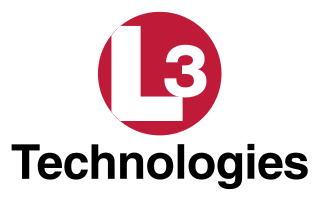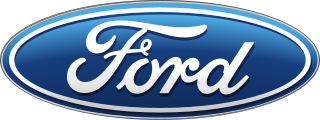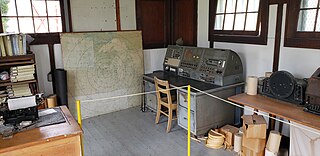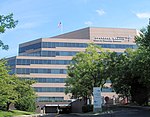History
LMTSS was preceded by LMATM, which started as a campus of IBM Federal Systems. When the Federal Aviation Administration (FAA) awarded the contract of the Advanced Automation System (AAS) to IBM Federal Systems, the work was performed at a newly constructed campus in Rockville, Maryland. Due to AAS's large size, the entire campus became involved in the program. During the program's development, the campus became specialized in air traffic control programs. This would lead the campus to become a division that worked almost exclusively with the FAA and other civil air authorities like the United Kingdom's National Air Traffic Services (NATS).
In 1994, IBM was in financial difficulties. This led newly hired CEO Lou Gerstner to raise cash and rid IBM of business that was unprofitable or "not in the hardware and services paradigm". IBM Federal Systems was one of the few IBM operating units that was profitable and for which buyers could be found. The unit was sold to Loral Corporation, becoming Loral Federal Systems. In 1996, Lockheed Martin acquired Loral's Federal Systems, defense, and SI business units for $9,100,000. The Federal Systems Rockville campus was merged with other air traffic management businesses within the newly formed Lockheed Martin Federal Systems to become Lockheed Martin Air Traffic Management.
During this phase of mergers and acquisitions, the AAS program ran into troubles due to a variety of large scale integration and requirements issues. The program was canceled and restarted twice, first in 1994 and later in 1996. The program was eventually canceled by the FAA at Lockheed Martin's request. Parts of the AAS system were spun off into the much more successful Display System Replacement (DSR) and HOST Replacement programs in 1998 and 1999. LMATM also built the New En Route Centre (NERC) in 1998 and Air Traffic Control centers in Taiwan, Argentina, and South Korea.
By the year 2000, the company had become profitable with these and other ATC programs. Between 2000 and 2003, the company was baseline profitable. The company dealt with the loss of the New Scottish Centre (NSC) contract due to NATS and FAA budget cutbacks. Moderate layoffs were made in order to reduce head-count and keep the business unit out of debt.
In 2002 and 2003, The newly formed United States Department of Homeland Security started spending billions of dollars on large security-centric programs. Traditional defense and government contractors started compete vigorously for these programs. Lockheed Martin followed suit by reorganizing their Systems Integration business unit. Parts of the company that were not strictly focused on the United States Department of Defense were moved around to units that competed in the private sector or for civilian government programs. The LMATM unit was merged with the security-based groups whose customers were the U.S. Customs and Border Protection, the Central Intelligence Agency, U.S. and Canadian Census agencies, and other such organizations. The modified company was renamed Lockheed Martin Transportation and Security Solutions.
In August 2005, Lockheed Martin TSS was awarded a $212 million contract by the New York State MTA for a security system to protect Mass Transit operations in New York City, to include subways, commuter railroads and bridges and tunnels.
In September 2005, Lockheed Martin TSS was awarded a $308 million contract by the National Archives and Records Administration to design and develop the Electronic Records Archives (ERA) program. The ERA will be a project ensuring the safe storage and recall of the federal government's electronic records, regardless of format, for "the life of the republic."
Effective January 1, 2009, Lockheed Martin TSS was dissolved and the business was realigned within the Lockheed Martin IS&GS (Information Systems & Global Solutions) business area. Secure enterprise solutions (SES) programs became a part of Lockheed Martin IS&GS-Civil and the heritage aviation programs became part of Lockheed Martin IS&GS Internal & Next Generation. In mid-January, that latter unit was renamed Lockheed Martin IS&GS Global. However, after the departure of the Global business unit president, Judy Marks, the unit was realigned again. The aviation programs joined the rest of the former TSS programs, and now report under IS&GS-Civil.

The Federal Aviation Administration (FAA) is the largest transportation agency of the U.S. government and regulates all aspects of civil aviation in the country as well as over surrounding international waters. Its powers include air traffic management, certification of personnel and aircraft, setting standards for airports, and protection of U.S. assets during the launch or re-entry of commercial space vehicles. Powers over neighboring international waters were delegated to the FAA by authority of the International Civil Aviation Organization.
Lockheed Martin Corporation is an American aerospace, defense, information security, and technology company with worldwide interests. It was formed by the merger of Lockheed Corporation with Martin Marietta in March 1995. It is headquartered in North Bethesda, Maryland, in the Washington, D.C., area. Lockheed Martin employs approximately 110,000 people worldwide as of January 2020.
Leidos, formerly known as Science Applications International Corporation (SAIC), is an American defense, aviation, information technology , and biomedical research company headquartered in Reston, Virginia, that provides scientific, engineering, systems integration, and technical services. Leidos merged with Lockheed Martin's IT sector in August 2016 for Information Systems & Global Solutions business to create the defense industry’s largest IT services provider. The Leidos-Lockheed Martin merger is one of the biggest transactions thus far in the consolidation of a defense sector. Leidos works extensively with the United States Department of Defense, the United States Department of Homeland Security, and the United States Intelligence Community, including the NSA, as well as other U.S. government civil agencies and selected commercial markets.

L3 Technologies, formerly L-3 Communications Holdings, was an American company that supplied command and control, communications, intelligence, surveillance and reconnaissance (C3ISR) systems and products, avionics, ocean products, training devices and services, instrumentation, aerospace, and navigation products. Its customers included the Department of Defense, Department of Homeland Security, United States Intelligence Community, NASA, aerospace contractors, and commercial telecommunications and wireless customers. In 2019, it merged with Harris Corporation and was renamed to L3Harris Technologies.

The Mitre Corporation is an American not-for-profit organization with dual headquarters in Bedford, Massachusetts, and McLean, Virginia. It manages federally funded research and development centers (FFRDCs) supporting various U.S. government agencies in the aviation, defense, healthcare, homeland security, and cybersecurity fields, among others.
Loral Corporation was a defense contractor founded in 1948 in New York by William Lorenz and Leon Alpert as Loral Electronics Corporation. The company's name was taken from the first letters of each founder's surname.

Ford Aerospace was the aerospace and defense division of Ford Motor Company. It was based in Newport Beach, Orange County, California, and was active from 1956 through 1990, when it was sold to the Loral Corporation.

Vaughn College of Aeronautics and Technology is a private college in East Elmhurst, New York, specialized in aviation and engineering education. It is adjacent to LaGuardia Airport but was founded in Newark, New Jersey in 1932 before moving to New York City in 1940. The college's most recent name change, to honor a founder, was on September 1, 2004.
Lockheed Martin UK Limited (LMUK) is a wholly owned subsidiary of Lockheed Martin, headquartered in London. The company was created on 1 July 1999, combining all of Lockheed Martin's UK operations into one company.

A flight service station (FSS) is an air traffic facility that provides information and services to aircraft pilots before, during, and after flights, but unlike air traffic control (ATC), is not responsible for giving instructions or clearances or providing separation. They do, however, relay clearances from ATC for departure or approaches. The people who communicate with pilots from an FSS are referred to as flight service specialists.
Aeronutronic was a defense related division of Ford Aerospace, owned by Ford Motor Company, and based in Newport Beach, Orange County, California.
Lockheed Martin Information Technology (I&TS) is a subsidiary of american company Lockheed Martin that consists of dozens of smaller companies and units that have been acquired and integrated. The company also administers a number of U.S. Government contracts. I&TS includes operations in information technology integration and management, enterprise solutions, application development, aircraft maintenance and modification services, management and logistics services for government and military systems, mission and analysis services, engineering and information services for NASA, and support of nuclear weapons and naval nuclear reactors. The US government accounts for more than 90% of sales.
Lockheed Martin Missiles and Fire Control (MFC) is one of the four core business areas for American company Lockheed Martin.
Lockheed Martin Systems Integration – Owego (LMSI) was a subsidiary of Lockheed Martin, in the Electronic Systems sector, located in Owego, New York, with approximately 4,000 employees. It used to be known as Lockheed Martin Federal Systems. Founded as IBM Federal Systems in 1957, it was sold to Loral Corporation in 1994. Lockheed Martin acquired Loral's electronic systems and systems integration business in 1996.
The Next Generation Air Transportation System (NextGen) is an ongoing modernization project of the United States National Airspace System (NAS). The U.S. Federal Aviation Administration (FAA) began work on NextGen improvements in 2007 and plans to have all major components in place by 2025.

The Air Traffic Organization (ATO) is America's air navigation service provider, as the operations arm of the Federal Aviation Administration. Its customers are commercial and private aviation and the military, and it employs more than 35,000 controllers, technicians, engineers and support workers.
The National Aviation Facilities Experimental Center (NAFEC) was founded July 1, 1958, by the Airways Modernization Board (AMB) and located in Galloway Township, New Jersey, near Atlantic City, New Jersey. On November 1, 1959, after passage of the Federal Aviation Act of 1958, it came under the newly created US Federal Aviation Agency (FAA). Its purpose was to conduct research and development on air traffic control computers, transponders, and advanced radar equipment. The success eventually forced the Civil Aeronautics Administration (CAA) to close its own Technical Evaluation and Development Center in Indianapolis starting in 1959.

Computer Usage Company (CUC) (1955–1986), sometimes called Computer Usage Corporation, was the first independent company to market computer software.
Mike Monroney Aeronautical Center is a regional office of the United States Federal Aviation Administration on the grounds of Will Rogers Airport in Oklahoma City. With around 7,500 direct federal employees, the Aeronautical Center is one of the Department of Transportation's largest facilities outside the Washington, DC area, and one of the 10 largest employers in the Oklahoma City metropolitan area. It is named for Senator Mike Monroney of Oklahoma, who wrote and sponsored the Federal Aviation Act of 1958.

Jack Clemons is an aerospace engineer and air and space industry professional. He was a lead engineer on NASA's Apollo and Space Shuttle Programs, and later an aerospace company executive. He appeared as himself in the "Command Module" episode of the 2008 Discovery Science Channel six-part documentary Moon Machines. He also appeared as himself in the 2019 National Geographic Channel documentary Apollo: Back To The Moon. Following retirement from the aerospace industry, Clemons was a consultant and a professional writer as well as a speaker and presenter on NASA's space programs.








